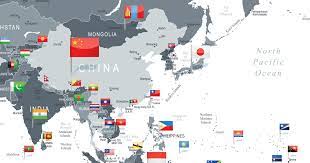CURRENT AFFAIRS
Get the most updated and recent current affair content on Padhaikaro.com
Asia Pivot Strategy
- Vaid's ICS, Lucknow
- 28, Dec 2021

Why in News?
The U.S. Secretary of State visited Southeast Asia, even as tensions with China continue to rise across different policy issues.
It indicates the returning back to the ‘Asia pivot’ or ‘regional rebalance’ strategy of the U.S.
What is the Asia Pivot strategy?
- Under this strategic approach, the US would seek to deepen ties with like-minded Asian nations.
- It also includes the unstated goal of balancing the aggressive rise of China as a regional hegemon.
- A wide range of policy subjects are included within the framework, including maritime security, technology, public health and biosecurity, trade and investment and climate change, etc.
- This is in contrast to the previous trade tariff war policy, leading to countervailing tariffs by China and causing economic pain on both sides.
- The present strategy is more on the economic competition with China rather than strategic confrontation.
Why U.S. is pursuing such a policy?
- The US wants to expand its soft power to forge agreements in areas of policy such as maritime cooperation and education and Peace Corps exchanges.
- It is seeking to leverage the opportunities for international assistance that have opened during the pandemic, for example, vaccine supply.
- The US donated vaccines to the Indo-Pacific region, which amounted to around 30% of its global contribution.
- The US is also advocating for human rights in Asia. The recently concluded ‘Democracy Summit’ that excluded China, Russia, and other nations in South Asia such as Bangladesh is an example.
- The platform can be used to highlight rights violations worldwide if it is further institutionalized and operationalised in the years ahead.
Which are the major challenges the U.S. can face in Asia?
- China’s economic footprint is larger in Asia. Its trade with every country across the Indo-Pacific region surpasses U.S. trade with the same.
- ASEAN nations are looking for more on the economic cooperation front from the US.
- But U.S. is not a party to the two mega-trade pacts in Asia viz.
- The Regional Comprehensive Economic Partnership (RCEP) and
- The Comprehensive and Progressive Agreement for Trans-Pacific Partnership (CPTPP).
China also has the advantage of the Belt and Road Initiative, which focuses on the construction of infrastructure including roads, railways, and ports.
Laos, Vietnam, and Indonesia, for example, have completed infrastructure projects with financial support from China.
FACTS FOR PRELIMS:
Shrew species.
Prelims- Environment.
- Researchers have identified 14 new species of shrews on an Indonesian island where seven in that genus were previously known.
- They were named Crocidura mediocris,C. normalis,C. ordinaria, and C. solita.
- All these organisms weighed ranging from about 3 grams just over one-tenth of an ounce.
- The largest species had bodies averaging 95 millimeters, or about 3.7 inches long.
Source: The Indian Express.
Rogue planets.
Prelims- Science & Technology.
- Astronomers have discovered the largest group of rogue planets.
- Rogue planets do not orbit a star and exoplanet hunters have found few such planets in our galaxy.
- The researchers found the rogue planets in a star-forming region located within the Scorpius and Ophiuchus constellations.
- Scientists are studying rogue planets, to find clues to how these mysterious objects were formed.
- There could be several billions of these free-floating giant planets roaming freely in the Milky Way without a host star.